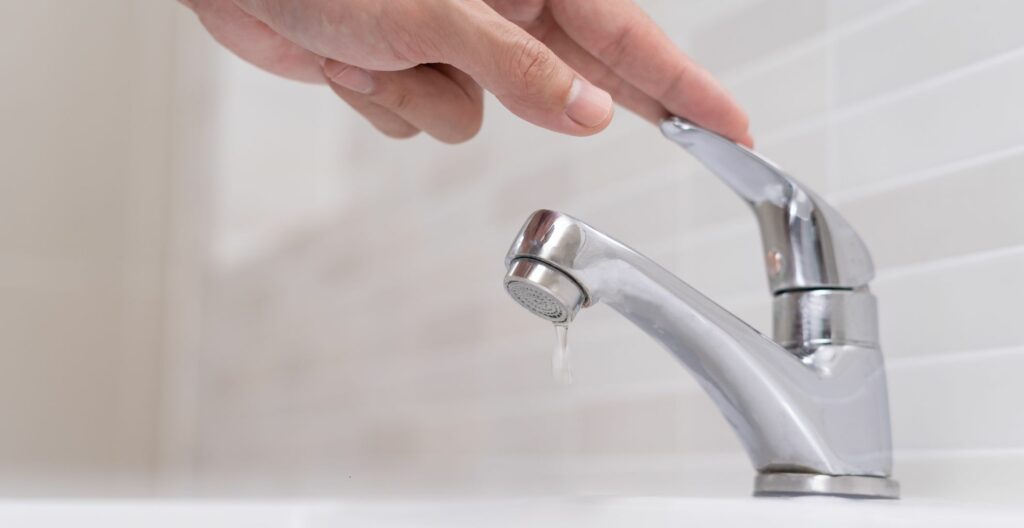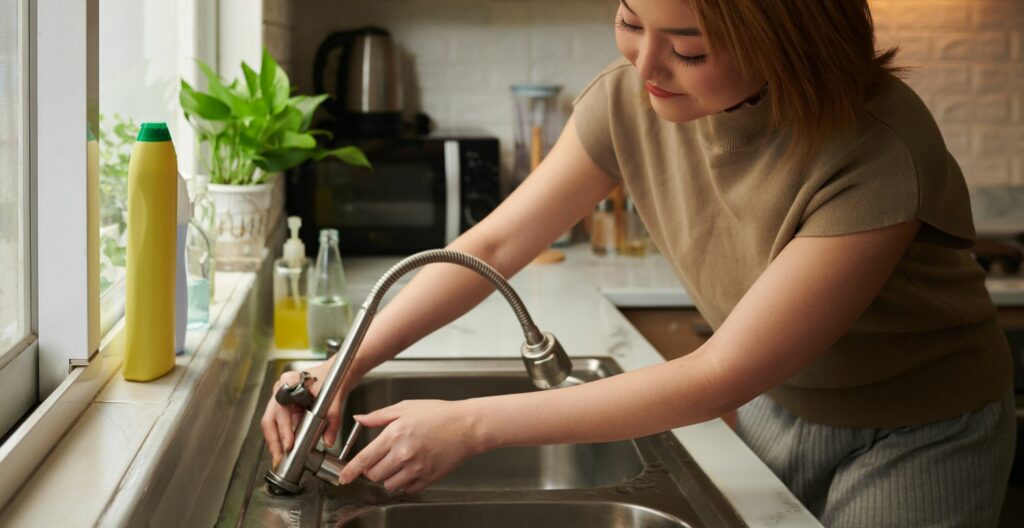
Open 24/7! Servicing all of Sydney’s Eastern Suburbs
Our Average Response time is: 1hr 53min 47sec
Do you have leaking taps in your home or business? Or have you had one in the past but held off on fixing it for a while? While it might seem like a small annoyance, those constant drips add up quickly.
Here's a revealing stat for you—a tap leaking just 10 drops per minute can waste around 90 litres of water each month. That’s over 1,000 litres a year!
And that's just a small leak. Larger ones can result in even greater wastage. This not only impacts your water bill but also contributes to unnecessary waste of our planet's most precious resource. As such, we are dedicating this post to help you stop procrastinating and fix that water leak ASAP.
A leaking tap can be caused by several common issues, many of which develop over time due to wear and tear.
It's important to note that regular maintenance can help prevent these issues and extend your tap’s lifespan.

Here are a few reasons and stats on why you should nip that leaking tap in the bud.
Water Waste Adds Up Quickly
As we touched on in the intro, leaking taps can waste a significant amount of water. According to a study carried out by the US Environmental Protection Agency (EPA), the average home loses over 10,000 gallons of water annually to leaks. Even a small, steady drip can lead to hundreds of litres of wasted water every year.
Higher Water Bills
Water leaks = higher water bills. A can add up to hundreds of dollars wasted in water bills.
Simple Fix, Big Impact
The good news is that most household leaks are easy to fix. Furthermore, it's an easy fix that contributes to major water wastage. Moreover, addressing the problem early not only conserves water but also prevents further damage to your plumbing system.
There are a few ways to detect sneak leaking taps in your home.
Start with the Basics
First things first—make sure all taps are completely turned off. A slow-running tap or drip might not seem obvious at first, so take a moment to double-check every single tap in the house.
Watch Your Water Meter
A sneaky way to catch a hidden leak? Check your water meter. If it’s still ticking over when no water is being used, there's likely a leak somewhere.
Listen for the Drip
Sometimes, your ears can catch what your eyes miss. If you hear a faint trickling or dripping sound, follow it to the source.
Look for the Signs
Keep an eye out for wet spots, mould, or greenish mineral streaks around taps and pipe joints—consider these as red flags and telltale signs of a leak. Again, a small pool of water anywhere is a good sign there's a leaking toilet.
While some plumbers may claim that fixing a leaking tap always requires a professional—the truth is, that some fixes only require a few basic tools and a little DIY effort.
One of the most common causes of a dripping tap is a worn-out washer. Replacing it takes just a few minutes with an adjustable wrench and can immediately stop unnecessary water waste. However, if you do not have the wrench or the problem is something other than a worn-out washer, then you could call a plumber. They may need to replace all the fibre gaskets and rubber rings in a leaking tap to ensure a proper seal, preventing further leaks and improving the overall efficiency of the tap.
Additionally, a leaking toilet is often a big culprit for water wastage. If your toilet is constantly running, the cause is likely a faulty flapper. A simple $10 replacement from Bunnings can save water.
Finally, check for loose fittings around taps and pipes, as tightening these connections can often resolve minor leaks before they become costly problems.
Ignoring a leaky tap might not seem like a big deal but now imagine every drop as a few cents going down the drain and you'll see that those drips add up fast and have a significant financial impact.
A single leaking tap can cost you anywhere from $60 to $200 a year, and if every Aussie household had just one, we’d be wasting a staggering 1.1 billion litres of water annually. That’s a lot of water (and money) quite literally going down the gurgler.
The good news? A tap repair kit comes with everything you need, plus easy instructions to help you get the job done in no time.
Being a homeowner is a tremendous privilege. Yet, with such privilege comes responsibility. This includes installing and maintaining the plumbing on your property, such as pipes and fittings from the water meter connection point. Of course, you do not have to physically do this yourself, but you are responsible for making it happen.

This also means monitoring and managing the water usage on your property, including any leaks. As mentioned, staying on top of your water meter can help you see just how much water is used and help you spot hidden leaks before they become costly problems.
On the subject of hidden leaks—if you have a concealed leak, you may be eligible to apply for a leak remission, which reduces the amount payable on your water bill to offset the cost of the lost water.
Eligible customers can receive a credit of 100% for pensioners and 70% for all other eligible customers on the excess state bulk water charge.
Just remember to regularly check your water meter to track your water usage so you can spot leaks and apply for a leak remission as well as save both water and money. Some concealed leaks could be deep in your piping systems and may require pipe relining by professional plumbers in your area.
Leaking taps may seem like a minor issue, but they can add up quickly, wasting water and money. If you're unsure how to handle the repair or if you're dealing with a concealed leak, our team at Plumberoo is here to help. Don't wait—take action today contact us here to protect your home and the environment.
How much water is wasted from a leaking tap?
A leaking tap can waste hundreds of litres of water annually, depending on the frequency of the drip.
How many litres of water can a dripping tap waste a day?
A dripping tap can waste up to 15 litres of water a day, depending on the frequency the tap drips.
How much water can be wasted from a leaky faucet?
A leaky faucet can waste up to 9,000 litres of water annually if left unchecked.
How much does a dripping tap add to a water bill?
A dripping tap can add between $60 and $200 to your annual water bill, again depending on the leak's size.